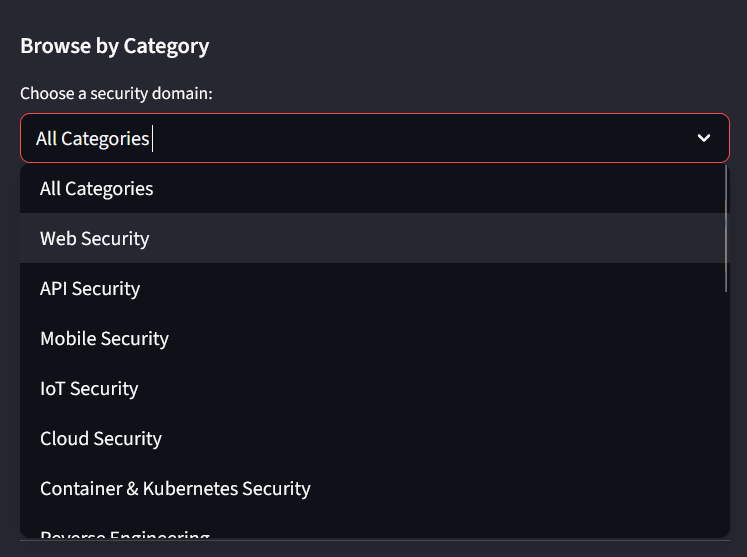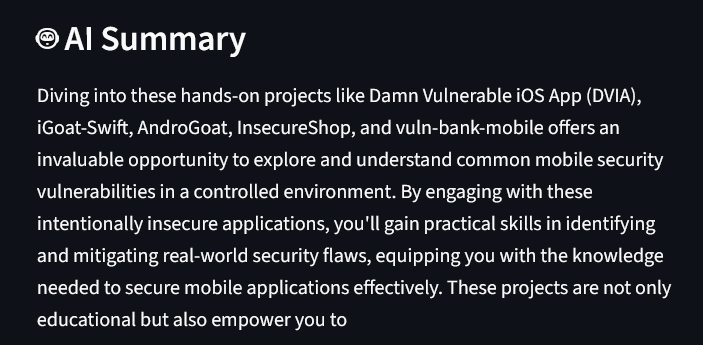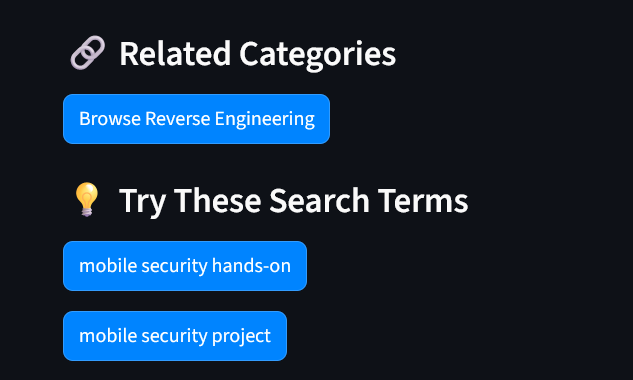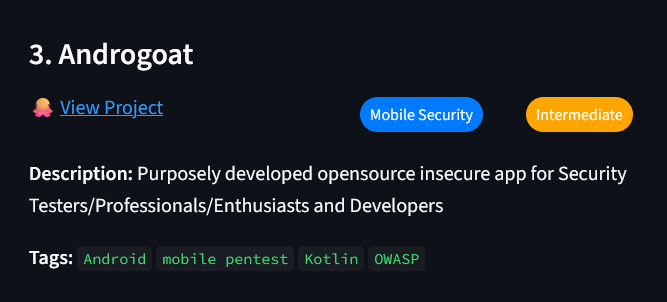Building HackList-Solving My Struggles with Finding Cybersecurity Labs
Lately, I’ve been learning new things, mostly around to AI and programming, and also trying to build more projects that’s helpful to me and others in the cybersecurity community.
This post is about HackList, my latest project. HackList helps you discover cybersecurity hands-on projects, practice labs, and vulnerable machines related to your field of interest. So, if you’re looking to improve your API hacking skills, you can use HackList to find projects like VVMA, VulnBank, crAPI, and more.
🌟The Story
As I mentioned earlier, one of my goals is to build more projects to help both myself and others in the community. I have a personal reason for this, and I believe a lot of people, mostly those who are new to the field, can relate.
Towards the end of last year, I started learning about mobile hacking. I was taking a course that had a few vulnerable apps for each section that I could practice with. The platform name is Hextree in case you’re curious. But outside of what the course offered, I wanted more. I searched, but I couldn’t find that many labs or so.
This isn’t actually how I got the idea for HackList. I’m just sharing because, like I said, this is a pain a lot of us can relate to. Sometimes, we struggle to find these resources, and our research skills might not be that great, which makes it even more difficult.
With the rise of AI agents and more, I thought of building agentic cybersecurity projects. I did my research and came up with a list of simple project ideas. Some that could help the community and some that could help organizations. Yep! For the community-focused ideas, they had to be simple with less resources required. And by resources, I mean time and money. That’s how I settled with the “cybersecurity project recommender” idea.
After agreeing on what to build, I started building. I had taken a few courses already and built a few agents, some of which worked, while some failed to work. (I’ll share a post soon on building an AI agent, just something short and easy to follow, so stay tuned if you’re interested!)
I feel this post is long. Haha
That’s it for the intro and backstory. Next, I’ll cover the tech stack, the features, show a demo, maybe share future plans, and then we say our goodbyes.
🌟 Tech Stack:
I didn’t spend much time deciding on the tech to use. Like I said, I considered the resources, my programming skills and what I was already comfortable using.
1
2
3
4
5
6
Python
OpenAI API
Streamlit
Serper API
Docker
Github
- Python: Used for the backend logic and agent orchestration
- Streamlit: for the web interface. This was easy to setup, so I thought to use it.
- OpenAI API: powers the AI recommendations and generates project summaries.
- Serper API: for performing web searches.
- Docker: for containerizing the application
- GitHub: for version control and project hosting
🌟 Core Features
HackList has a simple goal which is to make to make it eaiser to find relevant hands-on projects. It’s your go-to AI-powered guide to cybersecurity learning.
These are the key features:
1
2
3
4
5
🤖 AI-Powered Recommendations: understands your interests and finds relevant projects.
🔍 Multi-Source Search: searches different sources, mostly GitHub, for these projects.
📚 Preloaded Dataset: provides recommendations from a built-in list of cybersecurity projects.
🏷️ Personalized Results: suggestions are based on your specific interests and chosen categories.
🖥️ User-Friendly Interface: Streamlit web app for easy interaction
Other features:
- Browse by Category: explore projects by selecting a category from the sidebar.
- Search Settings: Control the maximum number of results and toggle web search on/off.
- AI Summary: Get AI generated summaries explaining the purpose and learning value of each project.
- Related Categories & Suggestions: Suggests related security fields and alternative search terms to help you discover more projects.
- Project Details: Display project name, description, difficulty level (beginner, intermidiate, beginner), tags, and direct links.
These features are what makes HackList what it is. Though it’s not %100 perfect, I’ll keep on improving it with time to make it more accurate with relevant features.
Demo
We know the technologies used, we know the features, but how exactly does it work? That’s what this section is about. The video below shows exactly how HackList works.
The demo sums up HackList, and shows you how to go about using it.
🧠 A Key Lesson Learned
While I’m still learning how to build AI tools, HackList is my first fully completed AI project that I’ve made public.
Each stage of the project taught me something new, but a key takeaway from this experience is: just start. It doesn’t matter; the journey is not always smooth, and your skills don’t need to be perfect. My programming skills aren’t at 100% and I’d just started building agents. In fact, I was taking the HuggingFace course on building AI agents, and at the task where I had to “build my first agent” (which actually wasn’t my first), I built it, but it didn’t run because I ran out of tokens. Instead of buying more tokens, I said, “Why not build “HackList using my OpenAI API?” And that’s how HackList was born.
If I hadn’t faced that challenge, I wouldn’t have worked on HackList. Some things do happen for a reason.
So, maybe seize every opportunity to do something. It doesn’t have to be coding; it could be anything that brings you close to your goals.
🚀 Launch Outcome
After completing the project, I used Docker to containerize it (deploy). The GitHub repo has installation guidelines. You’ll need your own openAI API and Serper API keys because, for now, I can only cover them for myself.
I announced the project on LinkedIn and Twitter(X). We’re still at the early stages, but I’ll share more updates soon. Right now, HackList has 12 stars on GitHub, which is encouraging and thank you to everyone supporting the project!
🔮 What’s Next?
I’ll continue adding more to HackList.
This project is open to suggestions, contributions, and collaborations.
If you’d like to contribute, feel free to jump in and help make HackList better.
As I get more ideas and resources, I’ll definitely keep improving it.
💭 Final Thoughts
Like I always say, this is just the beginning. I love to challenge myself and build things.
I’m excited to keep learning, building, and sharing with the cybersecurity community.
Thanks for reading, don’t forget to check out the project and leave a star.




